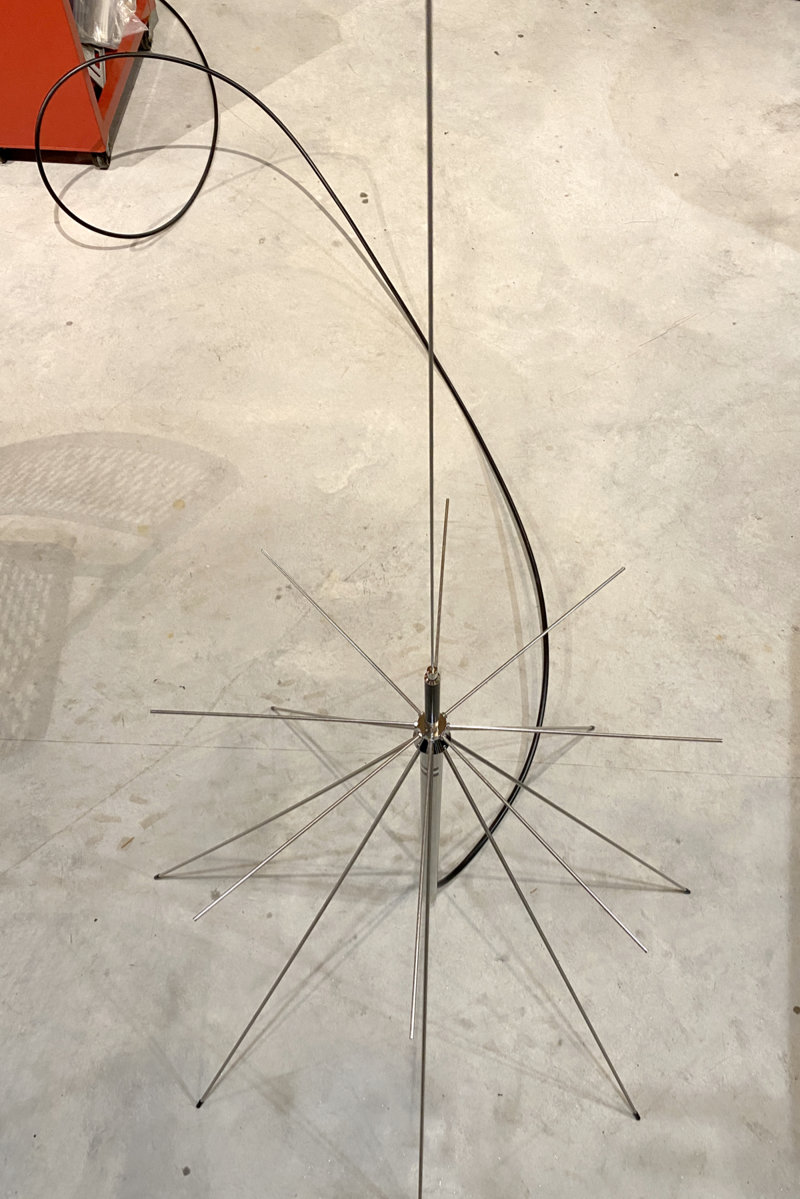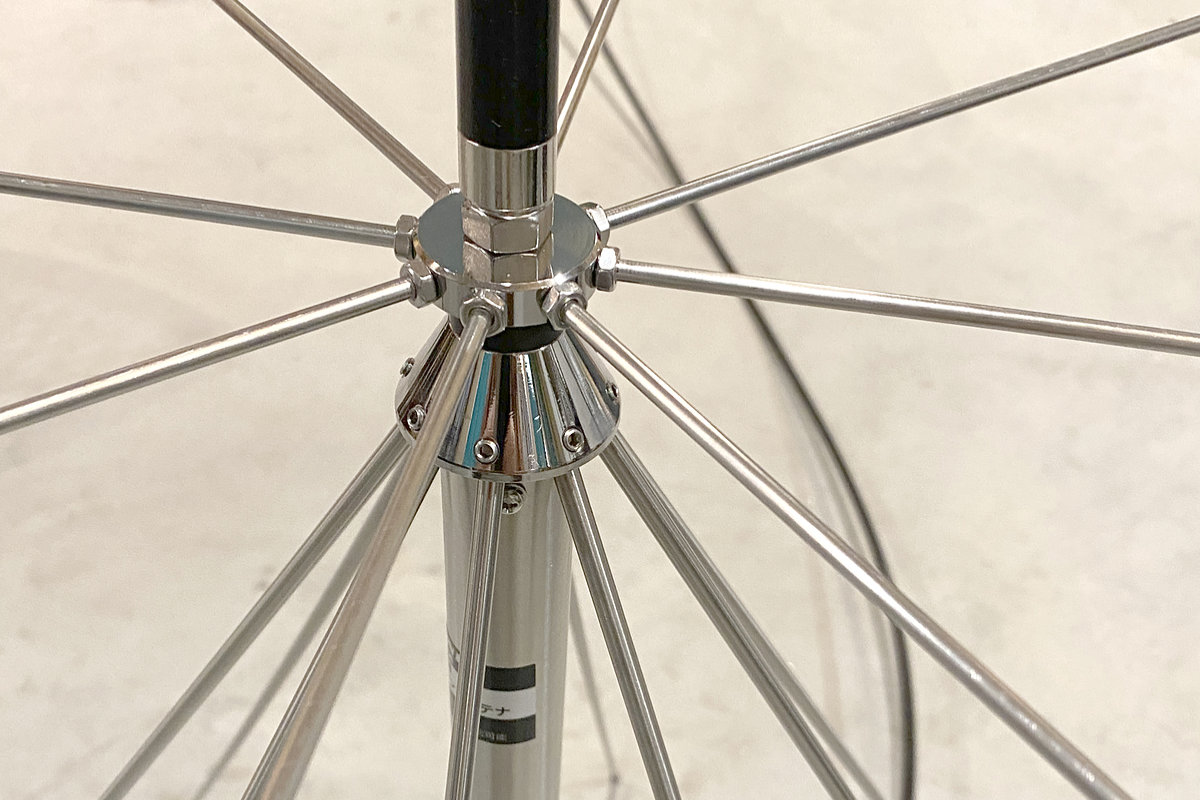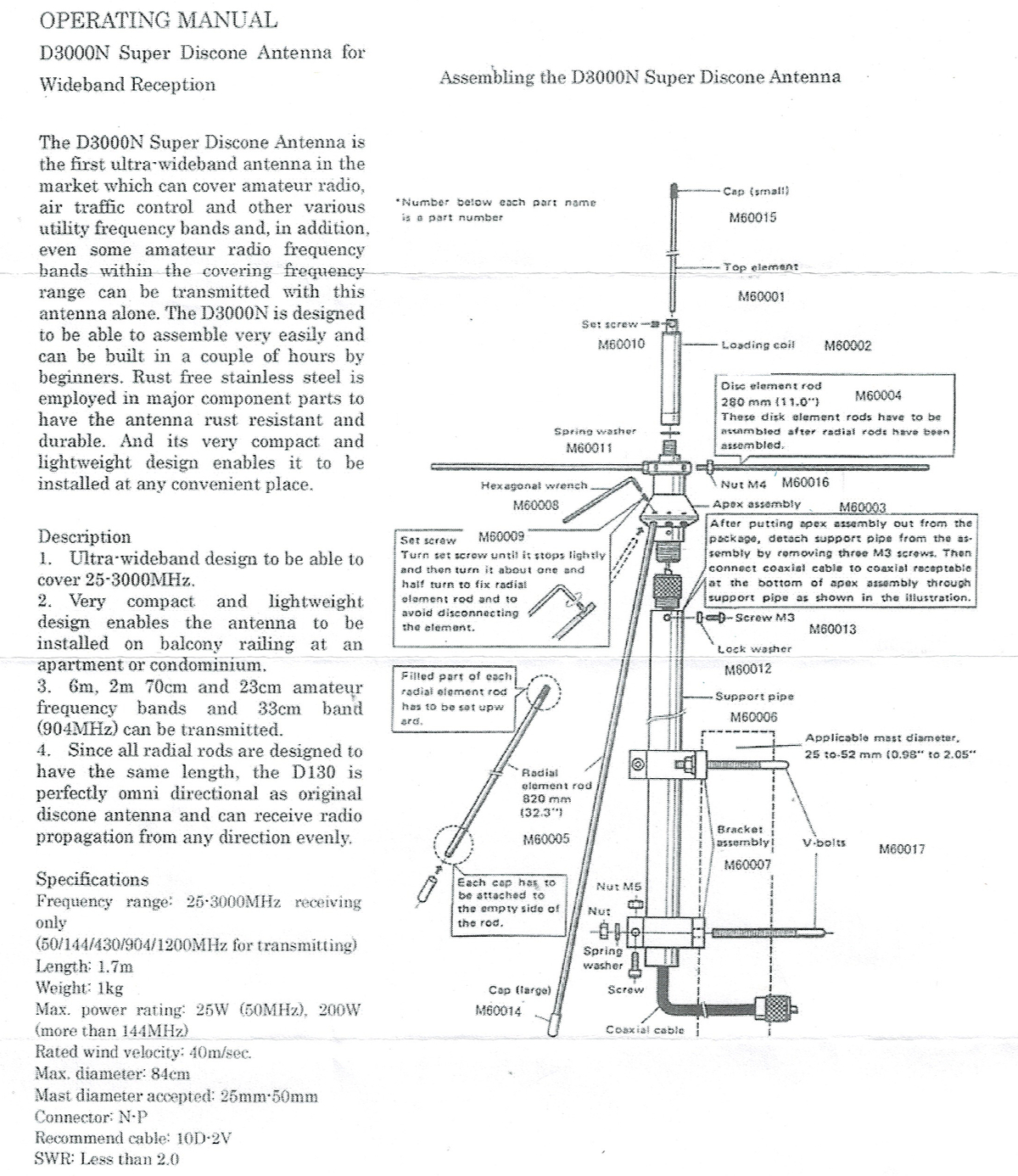Best Scanner Antenna – Diamond D3000N Discone – Why I Bought It

 image: my Diamond D3000N up on the pole
image: my Diamond D3000N up on the pole
Just a quick post here about my new scanner antenna. It is the Diamond D3000N. Diamond is considered to be one of the best (among several) VHF/UHF antenna manufacturers. They are located in Japan.
I’ll touch upon the preparedness aspect of having a scanner towards the end of this post.
Why I like the Diamond D3000N Antenna
Quality. Ultra wide-band discone (omni-directional). This antenna covers a huge range of frequencies from 25 Mhz all the way to 3 Ghz! Seriously, that’s ultra wide. There is A LOT of ‘stuff’ going on within the many FCC frequency allocations within this range!
After installing and connecting it, I was very surprised how much more that I could pick up (and further away) than what I was using before.
Most antennas are purposely designed to function well at a specific frequency or narrow range. This makes good sense for specific types of communications where that’s all you’re doing (using a specific type of radio for comms on a specific frequency band). But for a scanner, you want a wide band antenna because scanners can scan a very wide range of frequencies! I won’t get further into the tech, but that’s the short explanation of “why a scanner antenna”.
I did my research before choosing this antenna. Evidently it is the “go to” antenna for scanners. It’s not cheap. But you know what they say, “You get what you pay for”.
It should last for many, many years without a problem out in the weather elements. Stainless steel. The build quality was quite apparent when I assembled it.
I assembled it in the shop:

Here’s a close up picture of the stainless steel construction of the Diamond brand scanner antenna:

In case someone comes across this on an internet search, here is the manual sheet that came with the antenna. I scanned it. Maybe this will help someone who is curious. Assembly instructions and a bit more specific information about transmit frequencies (yes you can transmit on some bands with good SWR).
Diamond D3000N Assembly Instructions Manual

A Scanner For Preparedness
First of all, I just like radios – and antennas. They’re fun. It just is – for me… Maybe because my dad was a Ham operator and I’ve been around this tech since a child.
With that said, there are several reasons why it’s good preparedness – though I “get it” that most people aren’t particular interested in this tech gadget. For those who are, well, a scanner is a tremendous resource for gathering information about what’s going on out there in your region.
Police. Fire. EMS. Business. Marine radio. Consumer 2-way radio. Aircraft. Civilian. Military. There’s lots of communications in there.
It is a hobby all by itself. But it can also reveal ‘the pulse’ of what’s going on in your area. Police. That activity is good to know.
Bear in mind that most police comms are digital. You need a scanner that can decode these signals. In my rural location, most police comms are using digital ‘P25’. Although I can hear some police communications analog. All EMS and Fire in my area are analog. Anyway, this isn’t meant to be a tutorial.
Actually, right now I’m using a VHF/UHF transceiver as my scanner. I’m itching to get a specific scanner, but the one I would love to get is expensive. Maybe some day…
By the way, I use RadioReference.com as a great resource to find frequencies to monitor (the “go to” resource for this type of info).
Do any of you have a scanner? Which one?
